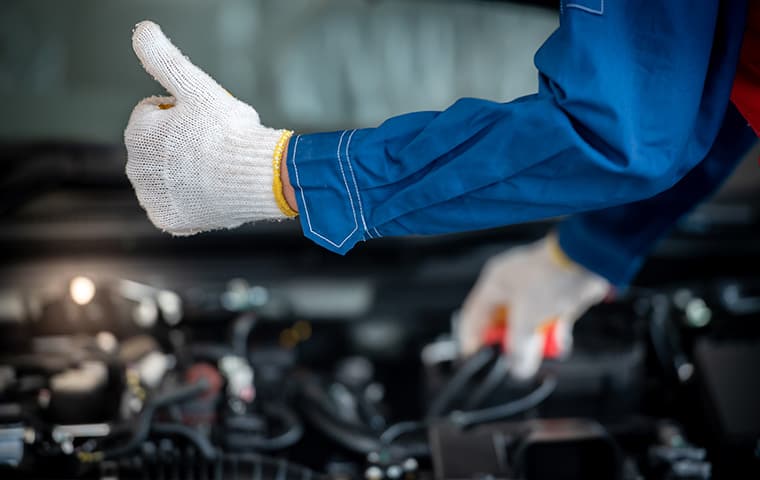Before the conclusion of each business day, truck drivers must ensure their vehicles are carefully inspected. You may not realize it, but post-trip inspections are equally as important as pre-trip inspections. The purpose of a post-trip inspection is to increase safety, limit company costs, prevent accidents and prepare drivers for their next destination.
What Is a Post-Trip Inspection?
Also referred to as a Driver Vehicle Inspection Report (DVIR), a post-trip inspection documents vehicle fault conditions known to the driver at the conclusion of each trip. It occurs at least once every 24 hours if a trip extends beyond a day. Post-trip inspection forms are available for drivers at most truck stops or from online vendors.
A post-trip inspection is meant to examine all of the important components of one’s truck. Only the truck driver is required to sign the report if there are no faults found. If a driver discovers defects, then his or her supervisor or company mechanic is also expected to sign the form. Afterward, the driver must get a signature from the next driver who is taking over the vehicle the following shift. This new driver must record that he or she is aware of the condition of the vehicle and prepared for the outcomes.
The post-trip inspection report is stored in the vehicle file and maintained 90 days minimum. Fleet managers should have separate forms for each truck.
Post-Trip Inspection Legalities and Compliance
For passenger vehicles, a post-trip inspection must be provided at the end of each shift. A report per vehicle operating each business day must be completed. Some may view this step as a time-consuming measure, but it is essential to evaluate the status of one’s vehicle.
During the evaluation, one must review the defects of the following items:
- Breaks
- Windshield and wipers
- Headlights, signal lights and tail lights
- Tires, wheels and rims
- Emergency equipment
- Steering system
- Coupling devices
Importance of Post-Trip Inspections
There is more to a post-trip inspection than merely maintaining compliance and evaluating crucial vehicle details. This routine assessment also offers benefits for your next trip.
1. Post-trip inspections give mechanics ample time to repair faulty vehicles.
A pre-trip inspection is meant to prevent drivers from operating damaged vehicles. A post-trip inspection prevents unnecessary delays that could prove costly to one’s company.
2. Post-trip inspections enable drivers to report timely problems.
These daily assessments limit company liability by ensuring the driver is aware of all vehicle issues. This helps company mechanics quickly address any immediate problems.
3. Post-trip inspections prevent potential violations.
Compliance, Safety, and Accountability (CSA) violations can be costly and repeated violations can injure one’s business. Implementing a post-trip inspection process mitigates the potential for vehicle dangers or issues.
4. Post-trip inspections provide a comprehensive review.
Pre- and post-trip inspections provide the opportunity for two independent drivers to review a vehicle's health before its next journey. The chance of both drivers to miss a crucial defect is low, and any potential defects can be addressed before it returns to the road.
How to Prepare for a Post-Trip Inspection
Fleet managers want to make the post-trip inspection process smooth and simple. For effective inspections, follow these preparation tips:
- Create an easy inspection form that allows your drivers to review every aspect of the vehicle with ease.
- Facilitate proper training for all drivers to clearly understand the company’s expectations. Take adequate time to walk them through every step of the process, reviewing the details they would need to pay attention to the most. Offer training courses periodically to educate drivers on new technologies.
- Perform random inspections to prepare your drivers. Ensure that they know what aspects of the vehicles to inspect and how to complete a report.
- Establish clear processes for your fleet when defects do arise.
Electronic DVIR
When considering how to best complete your post-trip inspections, you may want to go digital. Telematic systems such as Azuga are tailored for fleet management, which includes DVIR reporting. These offerings make the inspection and reporting processes easy, save time and create efficiencies. Reports are readily accessible on smartphones and tablets. With real-time alerts, documenting on hand-held devices makes it easier in a remote setting.
Key Takeaways
Post-trip inspections are still essential processes in fleet management. Early preparation for this end-of-day step provides good time management, efficiency in delivering services, a sense of responsibility among drivers and compliance with the regulations required by the Department of Transportation.








